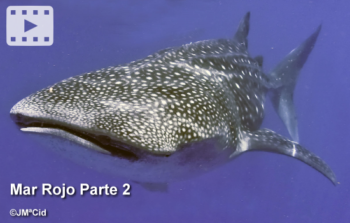Mar Rojo I
Author: Jose Maria Cid RuizAbstract
This marine biology documentary is geared towards naturalists, aquarists and aquariologists who maintain marine reef aquariums and aims to show and identify marine reef species in their natural environment. The documentary follows a scheme by families of fish and shows photos and video sequences of each species, taken in the Red Sea for several years and in various locations.
This study of zoonation discovers the immense biodiversity that can be found in its waters. In this first installment “Red Sea part I” we will observe closely the angel fish (Pomacanthidae, Pomacanthus, Pygoplites, Genicanthus), butterfly fish (Chaetodontidae, Chaetodon, Heniochus), clown fish and damsel fish (Pomacentridae, Amphiprion, Dascyllus, Abudefduf, Chromis, Pomacentrus, Neopomacentrus, Amblyglyphidodon) cohabiting in symbiosis with their anemones (Entacmaea, Heteractis). Groupers (Cephalopholis, Epinephelus, Pseudoanthias, Variola) and shoals of multicolored tropical Anthias (Serranidae) show us how to live and feed in their natural habitats.
We can see the species that we keep in our aquariums performing in nature and draw conclusions on how to improve their quality of life in the aquarium and, much more …
Resumen
Este documental de biología marina, está orientado hacia los naturalistas, acuaristas y acuariologos que mantienen acuarios marinos de arrecife y, tiene por objeto mostrar e identificar las especies marinas de arrecife en su medio natural. El documental sigue un esquema por familias de peces y va mostrando fotos y secuencias de vídeo de cada especie, tomadas en el Mar Rojo durante varios años y en varias localizaciones.
Este estudio de zoonación descubre la inmensa biodiversidad que se puede encontrar en sus aguas. En esta primera entrega “Mar Rojo parte I” observaremos de cerca a los peces ángel (Pomacanthidae, Pomacanthus, Pygoplites, Genicanthus), peces mariposa (Chaetodontidae, Chaetodon, Heniochus), peces payasos y peces damisela (Pomacentridae, Amphiprion, Dascyllus, Abudefduf, Chromis, Pomacentrus, Neopomacentrus, Amblyglyphidodon) cohabitando en simbiosis con sus anemonas (Entacmaea, Heteractis). Meros tropicales multicolores (Cephalopholis, Epinephelus, Pseudoanthias, Variola) y cardúmenes de Anthias (Serranidae) nos muestran cómo viven y se alimentan en sus biotopos naturales.
Podremos ver a las especies que mantenemos en nuestros acuarios desempeñándose en la naturaleza y sacar conclusiones sobre cómo mejorar su calidad de vida en acuario y, mucho más…




